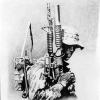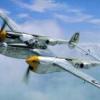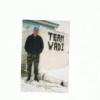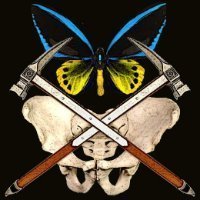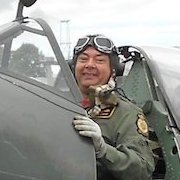Search the Community
Showing results for tags 'revell'.
-
Hello guys, This is my first and only car build so far, really enjoyer building it. Here it is: Thank you for looking...
-
Ladies and Gents, After a failed attempt at a NMF with a brush and an almost total collapse in my enthusiasm for the hobby, a post by rs2man selling some of his stash caught my eye. A quick PM and exchanging of funds found this little lady on my doorstep: I figured after the success I had with my Hasegawa HE-111 that maybe another one of their kits in Olive Drab was what I needed to create a bit of interest and self-belief again. With the box opened and the sprues examined, I was pretty happy that this was a kit that I could do business with. The moulding is superb, the kit decals involve not a scrap of NMF and I figured that my challenge for this build would be my first nose sitter (I need to find some weight somewhere) and my first go at external photo etch. PE and I don't get along, but I have some etch primer and a desire to make this bird fly so you never know. The obligatory sprue shots are here: So I'm pretty much ready to get things underway. I'm off to Flying Legends on Sunday with a camera in hand to see if I can photograph anything useful and then I'm probably good to go. I am still looking for two things. Firstly a good set of technical drawings for a solid nose mitchell seem a lot harder to find than I thought they might be so if anyone has any or can point me in the direction of a good set it would be appreciated. And then secondly, I'm wondering if anyone out there has built the Hasegawa version of this kit (or the glass nose version) or has it in their stash and would mind scanning the instructions for me? I have the Revell instructions, but Revell kits and I have a history of falling out because of their frankly appalling diagrams and I quite fancied taking a look at what the Hase guys did with the same kit. As always, all support and encouragement is greatly appreciated. If I fail at this one, I'm giving up and buying die cast in the future. :-) Cheers, Richard
-
Sorry I'm late to the party but I've been very busy building a stupid amount kits for another group Matador... GR7
-
This is the old kit from Revell. I think all they did was put some new pieces in their PFM kit to make an MF. Detail is lacking, the cockpit is a mess and inaccurate with the molds and fit are not up to what you'd expect today. Rather than chuck it out I thought I'd just build it as is, for the detail sets would cost more than simply buying the rather nice Trumpeter kit. Mark was nice enough to send me a pilot from the Trumpeter kit and Tony some VPAF markings (thanks guys) and I scrounged some sidewinders from an old Revell F-4E kit to stand in for R3-S missiles as they were pretty much Russian made sidewinder copies anyway. I was meaning to represent red 5040, the MiG 21 nightfighter that allegedly shot down a B-52 during the 1972 Christmas bombings, but I mucked up the masks for the numbers several times and rage quit them, so I'm calling it done. Unfortunantly its a grey old day in Melbourne for taking pictures, as you can see.
-
Revell is to release a brand new tool 1/32nd Supermarine Spitfire Mk.II kit - ref. 03986 Release expected in April 2014 Source: http://www.revell.de/index.php?id=210&KGKANR=0&KGKOGP=10&KGSCHL=2&L=1&page=1&sort=0&nc=&searchactive=&q=&SWO=&ARMAS4=&PHPSESSID=8a090e671c5d75ba637c3b1fa6b2c13f&KZSLPG=&offset=3&cmd=show&ARARTN=03986&sp=1 V.P.
-
My Revell 1/48 Ju52 , Been wanting to do a Ju52 for a while.The nose art is all original work so dont look to far into it , also the markings are probably wrong ,but its what i had so i went with it , i tend to do kits to what i like , so if you are expecting 100% originality not the place for you here lol hope you all like and feel free to leave comments good and bad , am a big boy i can take it lol , (ps here is a small WIP if intrested http://www.britmodeller.com/forums/index.php?/topic/234963014-ju52-revell-148/ )
- 23 replies
-
- 8
-

-
This is my latest completion. It was done for the Tomcat STGB II and I thought I would to try and inject a bit of humour into this build, anyway I had fun doing it. The hardest bit was getting Maverick 'giving the bird', something that didn't work out too well but, after some major amputation, he is doing it. Enjoy. Kits Tomcat - Revell 1/144 F-14A MiG-28 - Revell 1/144 F-5E TigerII Figures OzMods & Prieser 1/144th Generic ranges Paints Lifecolor and Citadel Decals Revell 1/144th F-14D Grey Scheme from spares box VF-1 F-14A .PDF file supplied by Scarlet MiG-28 homemade Build Thread is here http://www.britmodeller.com/forums/index.php?/topic/234958011-the-data-on-the-mig-is-inaccurate-scene-from-top-gun-in-1144th-finished/
- 33 replies
-
- 27
-

-
Hello, I've just recently finished this poor detailed and annoying kit. It comes with a brilliant set of decals thou. On the model, there are 157 all together. Three days of work just on decals:) Anyways, there it is: Thanks for any opinions. Bart.
- 22 replies
-
- 22
-

-
The kit is the 1/32 F-104 Starfighter from Revell in a special decal edition box. This kit caught my eye in the poor, pathetic, castoff section of one of my local hobby shops. It is from a purchase of a kit collection and I bought it solely because of the decal option. I normally focus on WWII aircraft and prefer propellers on my kits. However, of late, I have gotten on a Tiger Meet theme. Now, strictly speaking this is not from a Tiger Meet. But, it is of a similar vein. I have no real information as to the actual aircraft other than a few pictures I found on the web. I also do not know how accurate this kit is, but it looks like/resembles a Starfighter to me. On opening the box, the first thing I noticed was the decals. They are old. How old? The instructions and wonderful trademark on the port wing indicate the kit was made in 1980. I made a few modifications to the kit to more closely resemble an F-104 G at the suggestion of a fellow Britmodeller who knows far more than I about F-104s and this particular plane. The WIP thread is here http://www.britmodeller.com/forums/index.php?/topic/234959637-f-104-hunting-cat/. Another reason I chose this model is I am learning how to use an airbrush. Since this scheme is so colorful and combines a flat camo scheme on one side with a glossy bright color scheme on the other side, I thought it would be ideal. I thought this kit would kill me as to painting it. Most of the errors were from my own inexperience. What I did learn was to more appreciate you people that have seemed to have so effortlessly mastered the black, evil and sadistic art that goes by the name airbrushing. For your perusal: Not a whole lot left visible inside of the cockpit, but here goes: As always, all comments welcome.
- 12 replies
-
- 11
-

-
This caught my eye in the poor pathetic section of one of my local hobby shops. It is from a purchase of a kit collection and I bought it solely because of the decal option. I normally focus on WWII aircraft and prefer propellers on my kits. However, of late, I have gotten on a Tiger Meet theme. Now, strictly speaking this is not from a Tiger Meet. But, it is of a similar vein. I have no real information as to the actual aircraft other than a few pictures I found on the web. I also do not know how accurate this kit is, but it looks like/resembles a Starfighter to me. On opening the box, the first thing I noticed was the decals. They are old. How old? The instructions and wonderful trademark on the port wing indicate the kit was made in 1980. So, I am hoping this will not be a waste and the decals fall apart when I begin to apply them. I am going to be optimistic and put the kit together and paint it; then hope for the best. It has an interesting paint scheme as the port side is white and orange with the cat chasing mice scheme running its length. Starboard is a regular camo scheme and the undersides in aluminum or silver. I don’t know the date this kit was originally manufactured, but it must have been prior to 1980 as there is a lot of flash on the parts. Now it is easy to remove, but there is a lot. The parts count is relatively low, but I did not buy the kit for a massive amount of detail, I bought it for the paint/decal scheme. So, there will be no detailing or “correcting for errors” as I have no idea what to correct for. I’m just hoping the fit of parts is good. First off, the cockpit. Not a lot of detail and not a lot of parts. I am hoping the color callouts in the kit are correct, so my apologies to Starfighter experts if I finish the cockpit incorrectly. I started with a very basic instrument panel, base painted in Nato Black and then weathered and highlighted with a dry brush of silver and some red knobs. Then the front cowling received the same treatment with some clear blue applied to a clear window that sits in front of the gun reflector sight. (Which I glued in place, but has now vanished into the great beyond. I’m thinking the chances of finding a very small clear part are slim to none. I will have to improvise later.) I then painted the seat, the control stick and the cockpit tub. I weathered them and had fun with the side dials. The cockpit tube and cowling were glued to one half of the fuselage and then the two halves were glued together with the following results. After the fuselage was together, I found this little lapse in construction that will have to be rectified with some plastic sheet before the canopy is put on. This is going to be a long kit Some more parts were put in place on the fuselage, these on the bottom . . . The cannon cover. The kit gives the option of having the cannon and its bay exposed, but for this kit, given its scheme, I think the cover should be closed. I am just glad it fits so well. When I glued the cannon cover I noticed this. . . Just seems that a kit of this size would have the gun port “opening” opened. So, with a drill and some filing, I opened up the gun port to this . . . Looks a little better. I then added the intakes port and starboard Now on my last two nose wheel aircraft, I forgot to add weight to make them sit correctly. I was not about to make that same mistake again. Luckily, the kit provides a very large and long nose cone which I filled with fishing weights and superglue. (More on that at the end of the post; clumsy is my name.) So as the nose cone dries, I move to the other end of the fuselage to add the tail section. The kit comes with two different styles of tails, but the instructions only call out one for use in this model. I am not sure what the other tail is for. All I am hoping is that the tail insert will fit the body and go together seamlessly. Now it would have been nice if the designers of the kit thought of how this kit would be constructed and painted. If they would have considered it, they would not have designed the exhaust nozzle to be inserted into the tail section prior to its attachment to the fuselage body. They would have been kind and designed the nozzle to be inserted after the tail section was attached so it could be left off to ease painting the fuselage. Yeah, no such luck. So I put together the exhaust nozzle . . . Gave it a base coat of gunmetal (Humbrol 53) . . . Then doused it with some Tamiya Smoke . . . Put on a coat of Tamiya Clear Blue and then removed most of it with paint thinner for this result. Next I dry fit the exhaust nozzle section with the tail section so I can check its fit to the rest of the fuselage. I had some suspicions that this assembly was not going to mesh well with the rest of the fuselage. Here are the pictures that show how “seamlessly” it will fit. The diameter where the exhaust nozzle fits is too small and there is a nice little step that will have to be contended with. Then there is a rather large gap where the tailplane is going to fit. Somehow, I don’t think the tailplane is going to be that thick so some sort of spacer will be needed. And finally, when the exhaust section of the tail is fit flush, there is a large gap where the rest of the tail section is to meet with the fuselage tail section. Not real sure if I can manhandle that, or more spacer material will be needed. To fix the diameter issue, I messed around with some sprue to create a spacer which increased the diameter of the tail section exhaust opening to match the diameter of the fuselage exhaust opening area. I think the next step will be to attach the bottom part of the tail section to the fuselage, let that dry to a nice hard bond, and then manhandle the top part of the tail section to fit flush to the rest of the fuselage. At that point, I can then dry fit the tailplane to see how I can fix that huge gap. At least that is my plane for now. For right now, I am waiting for the glue to dry on the spacer, so it can be cut down to allow the exhaust nozzle to fit. Now originally, when I was devising my plan of attack to do the paint scheme and decals, I thought it might be best to construct the fuselage section first, paint it and then decal it. After that, I would build, decal, paint and attach the wings. As I began to look at the paint scheme of this kit and how involved it was, I decided that I should just bite the bullet and assemble the entire kit; then paint and decal. Granted it might be easier to put fuselage decals on without the wings, but it would be a nightmare to try to match up the paint schemes of the wings and fuselage if painted separately. So it’s on to the port wing which consists of the stubby little wing and the end gas tank. And this is then glued to the fuselage. The fit being quite good and just minor seam cleanup on the gas tank. I also glued the nose cone to the fuselage This aircraft is as long as my keyboard. And this is where I am going to stop. But, not before this picture Now, I know what your first impressions are and this is not what you think it is. This is actually the result of a learning process of many years regarding my limitations. I am a clumsy oaf. I now admit it. I tried to ignore it and pretended I wasn’t, but I am. Most people are careful with their tins of paint, glue, filler, etc. I am not. If it can be spilled, I will find a way to do it. What you see above is the cleanup from my dumping most of the superglue I used to fill up the nose cone to hold the weights in place. Now I should know better, superglue only bonds instantly to your fingers and when you do not have the part placed properly. When you want it to bond instantly, it can take hours to set. Like a dunce, I filled the nose cone with weights, and then poured in a fairly substantial quantity of superglue to hold everything in place. Now why I then placed the nose cone down on my work desk is beyond me. Ten minutes later I notice a very large patch of superglue all over the top of my desk, slowly attempting to permanently attach everything in its path including some finished kit parts. So, what you see above is my realizing my limitations and I now only build on a desk with a glass top!! Paint spills, glue drips, filler blobs, all can be scraped off with a razor blade. If you are a klutz like me, I heartily recommend a glass desktop. All comments always encouraged and welcomed.
-
THE NEPTUNE P2V-7/SP-2H IN SERVICE WITH THE ROYAL NETHERLANDS NAVY: NAS=Naval Air Station NAF=Naval Air facility RNLN=Royal Netherlands Navy MLD= Marine Luchtvaart Dienst (Naval Air Arm/ Royal Netherlands Navy) On the 21 off august 1961, it was decided by the Dutch Ministry of Defense that the Royal Netherlands Navy was to acquire 15 Lockheed Neptunes air frames type P2V-7B. These aircraft were to be numbered 200/214. The reason for this acquisition was a large conflict with Indonesia over the Dutch colony Papua New Guinea. To strengthen the presence of the Dutch armed Forces in the region, the choice fell on the Lockheed Neptune. These aircraft were to be armed in the nose section with four Hispano 20mm machine guns. Eventually eleven aircraft were flown from Lockheed Burbank to Naval Air station Biak in Netherlands New Guinea. The chosen route was: Burbank-NAS Alameda-NAS barbers Point-NAF Kwajalein to Biak, a flight from more than 6000 miles. They were to form Squadron 321. Four Neptunes (209-210-211-2120) were flown directly from the factory to the Netherlands for crew training and evaluation. Neptune registration number 200, crashed on the 11th of May 1962 at the airport of Mokmer, after fire in the starboard jet-engine. On landing, it lost all hydraulic pressure and ended in a ditch. It was written off. In august 1962, the conflict came to an end. In that same year the Neptunes flew back from NAS Biak via Tan-Son-Nhut-Katunayake-Karachi-Basra-Athens and finally to NAS Valkenburg. Only ten aircraft were to return. After the return to the Netherlands, the strength was fourteen aircraft. All were posted to the 320 squadron at NAS Valkenburg. Eventually, the machine guns in the nose were removed and replaced by the transparent nose section and after further anti submarine modifications renamed SP-2H. On the 23 of January 1965, Neptune (212) crashed in the North Sea. It was then decided to increase the squadron with four ex- French Navy Neptune aircraft. These were numbered 215/218. To note: Is that the 212 was “hijacked” by two aircraft mechanics. After take-off from the runway at Naval Air Station Valkenburg, the 212 crashed in the North Sea. Both mechanics lost their lives. The Navy lost a very precious airframe. After this incident, you were shot without any questions if you got near the parked Neptunes. Taking part in many military exercises and patrolling the oceans in the cold war period In 1982, the last operational Neptunes were phased out and replaced by the P-3 Lockheed Orion. For thirty years, this beautiful aircraft did sterling service for the RNLN.The specific sound of the Wright R-3350 18 cil, accompanied by the Westinghouse J34-WE jet engines were over. LONG RANGE MARITIME PATROL AIRCRAFT (LRMPA) THE COCKPIT ACCESS PANEL IN OPENED POSITION, FOR A BETTER VIEUW IN THE "OFFICE". NOTE ACCESS LADDER "THE OFFICE" THE EDUARD BOMB BAY. ALWAYS OPEN AFTER THE AIRCRAFT WAS SHUT DOWN. FRONTAL VIEUW OF THIS BEAUTIFUL AIRCRAFT. NETHERLANDS NAVY STENCILS AND THE ROUNDELS. (EXCELLENT DECALS IN THE REVELL BOX) IF ANY QUESTIONS ARISE, JUST SHOOT. FOR MORE PICTURES SEE " THE AIRLINERS NET " SEE ALSO THE GROUP BUILD OF THE NEPTUNES IN "WORK IN PROGRESS" REGARDS FROM THE NETHERLANDS, ORION.-
- 21 replies
-
- 23
-

-
- Revell
- Scale 1/72
-
(and 3 more)
Tagged with:
-

Revell 1/25 Shelby GT500 **COMPLETE***
Rickpadwick1801 posted a topic in Work In Progress - Vehicles
Hi Everyone, Here is my next project : Revell 1/25 Shelby GT500 Normally this kit is painted in Ferrari Red with Black decals, White with Blue decals or Brown/Steel mix with White decals. I am not doing any of these colour schemes. I am going with a Gloss Black body with the Blue decals from the kit. All of the chrome accent parts are going to be used. This is my dream car, so I am doing it as a custom build for me. Anyway here are the sprue shots. I have aready started painting the engine components so will be starting assembly of the engine components later and then its onto the chassis etc. Photos tomorrow. Thanks for looking, Rick -
In the Tomcat STGB1 I built this from the early revell kit, it turned out ok but at best it's a little rough around the edges. For the USN GB I built this santa catfrom the dragon kit and the fightertown decals. So I've spent plenty of time mulling over what I'm going to build for this GB; with the release of the res-im flap and slat resin kit it seemed appropriate to dig out the dragon carrier deck. I've both the revell A & D kits but after watching the "The Final Countdown" on Netflix I'm going to do the early Jolly Rogers film scheme in the A kit. So here's the revell F-14A and the dragon carrier deck kit, the resin wings, some reference material and a pair of Ozmods pilots to finish it off. If I get all this lot finished I may have a go at either the F-14A in the flanker scheme from Fightertown decals or black lions F-14D with a TARPS pod.
-
Hi all, I won a Shackleton in its Revell incarnation, but upon receiving the kit I found out that the surface detail is spoiled by what appears to be damage to the mould surface, possibly rust. Also the plastic 'feels' different than the usual Revell standard. I can post pictures if you wonder what I'm talking about. Those of you in possession of the Revell kit can tell me whether they have the same problem? I wonder whether I have been suckered into bidding for Gomix plastic with the Revell box and decals...
-
Can anybody tell me why the Cyber hobby kit is more than twice the price of the revell seaking. Does it come with EB or things like that. I have looked but cannot find anything on the forums if this has been covered before please point me in the right direction (did use google but to no avail maybe not using right search words) Rodders
- 17 replies
-
- cyberhobby
- revell
-
(and 2 more)
Tagged with:
-
Just spotted this on eBay, for those that are interested: http://www.ebay.co.uk/sch/i.html?LH_PrefLoc=2&_nkw=revell+04885+747-8f+cargolux Andrew
-
I had so much fun doing the North Star and DC-9 for a Then And Now group build that I decided to do another pair. This time it's Revell's Lockheed Constellation in TCA colours paired off with Zvezda's Boeing 787 in my best approximation of the Air Canada colours it will wear when it enters service later on this year. The 787's fuselage fit is pretty good Only a skim of filler is needed on the bottom I blocked off the APU exhaust hole with a piece of styrene tube and filed it to shape The wings also fit well except where I stuffed up the assembly. But filler and sanding will save that A test fit reveals the size of the beast Turning to the engines, a coating of Humbrol Polished Aluminium on the fan bits While the hot section gets Polished Steel That lot can sit aside and dry while the primer dries on the Constellation
-
I thought I'd cover all bases by doing the F-14 in A, B & D variants. The kits I've chosen are Revell's F-14A and Ace Corporation's (Revell mould) B & D. I bought a set of Super Scale decals ages ago and I'm going to use the Bicentennial markings of VF-124 for the A. The B comes with markings for VF-103's 1996 "Santa Cat" and the D has markings for VF-2's "Last Cruise" bird. So I should have three colourful Tomcats when I'm finished.
- 46 replies
-
- 1
-

-
AH-64D Longbow Apache "100 Years Military Aviation" Revell 1:48 The AH-64 Apache was developed from the US Army's Advanced Attack Helicopter programme in the early 1970s. This stemmed from The US Army need to fill its anti armour role, following the cancellation of the AH-65 Cheyenne programme. This was designed to find the replacement for the AH-1 Cobra. Hughes Helicopters developed their Model 77 which became the YAH-64. The YAH-64 first flew in 1977. It features a nose mounted sensor suite containing targeting sensors and night vision equipment. A 30mm chain gun was carried under the forward fuselage and stub wing pylons provided four hard points for carrying AGM-114 Hellfire missiles and unguided rocket pods. The helicopter was introduced into US Army service in 1986. The AH-64D or Longbow Apache identified by the Longbow radar system carried on the mast head entered service in 1996. This was produced now by Boeing as they had acquired McDonnell Douglas, who themselves had acquired Hughes. The US Army is the primary user of the AH-64. Other users are Greece, Japan, Israel, Singapore and the Netherlands. The AH-64 is produced under licence in the UK by AgustaWestland as the AH1. The Royal Netherland Air Force acquired its Apaches in 1995 after it won their competition against the Eurocopter Tiger and the AH-1 Super Cobra. They now have 30 airframes which have seen use in Djibouti, Bosnia, Afghanistan and Iraq. One of their Apaches is used in a demonstration role and carries and attractive paint scheme for this. The Kit The Kit is the old Monogram kit, which dates back to 1986. You get the AH-64A kit along with a new sprue for the D model parts. The kit is typical of the period. The parts though are well cast and there is little flash evident. The kits is 3 sprues of grey plastic which form the basis of the original kit, and one sprue in a light grey plastic which supplies the D model parts. The new parts also have the distinctive mast head radar, whilst not used in this boxing it does mean a normal Longbow Apache can be made if you can source the decals. Construction starts shockingly enough with the cockpit. Controls are added along with instrument consoles and seats. Two pilot figures are supplied if the modeller wishes to use them. Construction then moves to the starboard fuselage half. The parts for the tail rotor attachment are installed. Following this the main rotor is built up and installed onto the decking which forms the back of the cockpit area (though I suspect most will leave this off until the end). Once this is complete the two fuselage halves can be assembled after taking care to open up the holes where needed. The next stage is to make up the engine pods and stub wings for both sides and attach them. The stubs wings interlock with each other to form a stronger joint. Following this the D model parts are added to the fuselage. They form the underside and side avionics pods. The landing gear is assembled and added along with the weapons pylons on the stub wings. Next you get to assemble and add the chain gun, sensor turret and tail wheel. Finally a variety of grab handles, external fuselage parts and the canopy are added. It should be mentioned that a lot of the external fuselage fixings must only be placed on after the decals are applied otherwise you will not get the decals on! The instructions then show putting additional details onto the main rotor, then installing it; strange as much earlier on in the instructions you have already put this on!! I suspect the earlier step is a mistake and they have not removed this from the A model instructions. A good reason to read the instructions through first Canopy The canopy is clear and molded with no flaws. It can be posed open or closed as needed. Decals The decals are the star of this release from Revell. The decals have been designed by Syhart and printed in Italy. The modeller will have to paint base Olive drab at the front of the helo, and the grey on the rear; along with the moving tail. The rest of the markings are provided on the extensive decal sheet. All of the printing looks good, and no register issues can be seen. Conclusion This should make upto a good looking model of the special marked Dutch Apache. Recommended if you want a bit of colour. Revell model kits are available from all good toy and model retailers. For further information visit
-
Right folks, this has been a long time in the making. I started this back in summer last year, before my life took a few turns for the worst. Building this kit was only ONE of the tribulations... It's the Revell 1/144 kit, originally meant to be the Lufthansa version, but I wanted a British Airways Landor version. That meant buying an Airfix version for the correct decals and the engines, which turned out to be a waste of time as the decals were scuffed and the engines were pretty useless lumps. I ended up getting the Draw Decal set and some resin engines, and still had to rob the wheels from the Airfix kit as the Revell ones were mis-moulded. As General Melchett observed, it'd have been easier and cheaper to get the Dragon kit and replace the decals! Anyway, after much kitbashing, scratchbuilding, filling and sanding, the finished article is finally here. I was hoping for some decent weather to photograph it in outside, but as I'm off work this week that's a forlorn hope...so, kitchen table it is. Hope you like it: Now, what's next? Cheers, Dean
- 42 replies
-
- 22
-

-
US Legends: 8th Air Force Gift Set Revell 1:72 Neither the 8th Air Force nor the aircraft contained in this gift set need much of an introduction. The B17, P47 and P51 have all earned their place in history through the hard graft that both they and their crews performed in the face of daylight combat with Axis forces over Europe. The 8th Air Force was born in 1942 and soon after started operating from UK soil on missions over Europe with the B-17’s and later with B-24’s. Missions in late ‘42 and ’43 shown the vulnerability of unescorted bombers despite the fact that the aircraft bristled with defensive armament. The aircraft that were available as escort simply didn’t have the range to protect the bombers across the full mission, leaving them exposed over the most dangerous legs. The P-47 started to escort bombers in August 1943 and eventually equipped the 4th, 56th and 78th Fighter Groups, however despite admiral capability for such a large fighter at altitude, it still couldn’t support the bombers to the target. Initial Merlin powered P-51’s came to Europe initially with the 9th Air Force so it wasn’t until December 43 when they were available to the 8th. The impact of the P-51 was immediate. The bombers now had an aircraft that had the range to escort the heavy bombers right to the target and back. In fact, the P-51 could fly as far on internal fuel alone as the P-47 could with drop tanks fitted. Bomber and fighter crews referred to each other as ‘Big’ and ‘Little’ friends respectively indicating the huge respect that they had for each other. The 8th Air Force continued pounding German targets across Europe right until the end of hostilities in Europe. The kits I wasn’t sure what to expect when I opened the box of this gift set, but sure enough, the B-17G is the newest release. Initial inspection shows all three kits to be of pleasing quality, recessed panel lines, plenty of detail and a beautiful decal sheet. Given the price of this set, it is quite a bargain and I’m sure will appeal to beginners and experienced modellers alike. Included in the box are the three kits individually packed, a single decal sheet and a single A4 instruction booklet using clear monotone line diagrams and paint instructions. Revell have also included a set of paints, glue and paint brushes ideal for beginners venturing in to the plastic kingdom. B-17G I’m not going to review this kit as it was reviewed here on Britmodeller by Paul, so instead, here’s a LINK Needless to say though, in summary, it is a great kit, filled to the brim with detail both internally and externally and very well engineered which Revell have excelled at in recent years. There are some imperfections however. The canopy area can be questioned if you have a love affair with the old Fort, the panel lines are somewhat excessive and the clear nose cone looks thicker than the real thing! As the decals contained in the kit are of the infamous ‘A bit O’ Lace’, I’m also including a link to a stunning build by Roman Schilhart from 2013 HERE to put my comments above in to perspective Or if you want to go in a different direction as Paul our reviewer did, take a look at THIS P-47D This is the P-47D-30 that has been around for a few years, but not previously reviewed on Britmodeller. I did some research to see what has previously been said about the kit and found some criticism of the shape, notably the belly being too deep, wing chord too wide at the roots and the undercarriage being too short. To check this, I compared the main parts against profiles in the Squadron publications and come to some different conclusions. Obviously, there can be errors in the profiles, so I’m only indicating my findings, certainly not trying to create argument. From the profile comparisons, I believe the belly to have the right depth, however the rear under fuselage is somewhat anaemic, lacking the full extent of the curved profile but correct at the tail. The wing roots appear to be correct in chord width for a ‘D’ model, but much like the lower fuselage, the trailing edge isn’t as curved as it should be, giving a slight chord error most noticeable mid-way along the wing. I never checked the length of the undercarriage, but believe the legs are too short making it difficult (or impossible!) to fit the large belly tank. With the accuracy issues out of the way, let’s turn to the build. Assembly is quite traditional, starting with the cockpit interior. The parts are supplied on 4 silver grey sprues contained in one plastic bag. There are signs of flash in places as seen in the pictures, but nothing of major concern. Detailing of the cockpit is effectively done, more than enough detail for what can be seen once the fuselage is joined up. Moulded in detail includes the panel instruments, cockpit side walls and seatbelts. The aerial mast has to be fitted before the fuselage can be closed which is a bit of a pain if you are clumsy like me and prefer to leave the sticky out bits until last to avoid the obligatory break! A decision needs to be made at this point whether you intend to have the undercarriage raised or lowered. If raised, you need to fit the rear gear bay doors before closing the fuselage up. Surface detail on the fuselage is nicely done with recessed panel lines and rivet details. Next are the wings. A straight forwards stage. Again, detailing is nicely done with recessed surface details and framed wheel bays looking great in 72nd scale. The engine has individual banks of cylinders and gear box that are to be mated together on assembly. There is some fine flash on the gills that will need some delicate tidying up, but overall, the shape looks well against the drawings I used for comparison. The undercarriage wasn’t neglected when the detail fairy at Revell did her stuff. The inside of the gear doors is very well done which will come out well on a panel wash. The doors are moulded as one per side for the option of having the gear retracted, however a cut line is provided to separate them for having a lowered configuration. Just be aware of the legs being too short and the impact this will have on an unloaded stance. Extending the length of them would be fiddly but possible with the careful use of brass and plastic rod. An option of belly or wing fuel tanks is provided as well as bombs for the wings. As mentioned previously about the undercarriage, dry fitting will be necessary to determine what is possible if you haven’t addressed the length of the gear legs. The canopy is designed to be sliding using a clever feature of the internal frame that locates within the guide rail on the back of the fuselage. Whether this is useful or better off chopped to allow the canopy to be simply dropped on will be of personal choice. P-51B Again, the kit is supplied win one plastic bag containing but only 3 plastic sprues, this time in dark green. Again, detail is comparable to the P-47. I’ve read of quite a lot of criticism of this kit in terms of accuracy, so again, I compared the main profiles with drawings from the Squadron publications to form my own opinion. I found the fuselage profile to quite accurately match the drawings, obviously, what this exercise doesn’t do is reference the curvatures around the fuselage. Indeed as already known, comparisons of the wing profiles show the root leading edge extensions to be wrong in that they aren’t tapered enough. Again, traditional construction techniques mean that we start with the cockpit. Detailing is on par with the P-47, although less will be seen due to the canopy design being more restrictive than the ‘D’ model with its bubble canopy. Surface detailing on the fuselage is crisp, with cockpit sidewall detail for the interior and fine recessed panel lines and rivet detail for the exterior. The seat has moulded in seatbelts too. Obviously, we can debate the visibility of panel lines and rivets on a 1/72 scale P-51, but personally I believe that they add to the kit in the way Revell have produced them. The exhausts are added to the fuselage from the outside which means they can be fitted after painting. Prior to closing the wings up, choose if you will hang anything off the hard points. If you do, then the relevant holes need to be opened up. The carburettor and supercharger intake have separate one piece moulded parts to prevent an unnecessary join from being on view. A separate supercharger exit door for the lower rear fuselage is also provided allowing you to choose the position that you want to assemble it in. The wings are well detailed including beautifully moulded gear bays. As with the P47, the gear doors provide single parts for each side allowing for ease of assembly in the retracted stance, but with a clear cut line to open them up if you want the gear lowered. The propeller is a slightly more complicated affair due to individual blades, so extra care will need to be taken on assembly. Armament options are 75 gallon drop tanks or rocket launchers, again detailing is nicely attended too. In terms of moulding quality neglecting the accuracy issues discussed, the only real let down in the kit in my opinion is the canopy. The plastic is rather thick, coupled with quite a complex shape, can numb the scale representation down quite a bit. If there is a vac form replacement available, you may want to consider this as an option to do the kit justice, possibly with the panels opened to show off the interior detail. Decals The gift set has a single decal sheet for all three kits contained. Typical of Revells quality as of late, they are beautifully printed with excellent register and colour richness. Stencils for each aircraft are also included, so don’t think that any compromises have been made in producing a gift set. Schemes provided are: B-17G-40-VE: 42-97976 ‘A Bit O’ Lace’, 709th BS, 447th BG, Rattlesden AB, April ‘45 P-47D-30-RA: 42-28382 ‘Ole Cock III’ Major Donavon Smith, 61st FS / 56th FG, ‘44 P-51B: 43-6506 flown by Major John Bennet 487th Fighter Sqn, 352 Fighter Group, Bodney AB June ‘44 Conclusion If you look for faults with any of these kits, you will find them. Some issues are more noticeable than others, I for one dislike the overly thick moulding on the nose cone of the B-17 (fortunately, vac replacements are easily available) and the panel lines a bit excessive. Fixing the leading edge extensions on the P-51B or the rear belly on the P47 is going to be much more difficult if you would bother to attempt it, however I believe that this set delivers huge value for money and hits its target market perfectly. All kits can be built with pleasing results from the box. As a kid I was inspired by the kits I built which fuelled my interest in aviation, and I’m sure this gift set has that same potential for budding young modellers today. Revell model kits are available from all good toy and model retailers. For further information visit
-
http://ideas.revell.de/ideas/item/440/ Please!
-
First finished model of the year and it's only half way through Based on the Revell Hawker Hunter F.6 kit modified to represent a Swedish Air Force J34 late in their service.
- 21 replies
-
- 17
-




